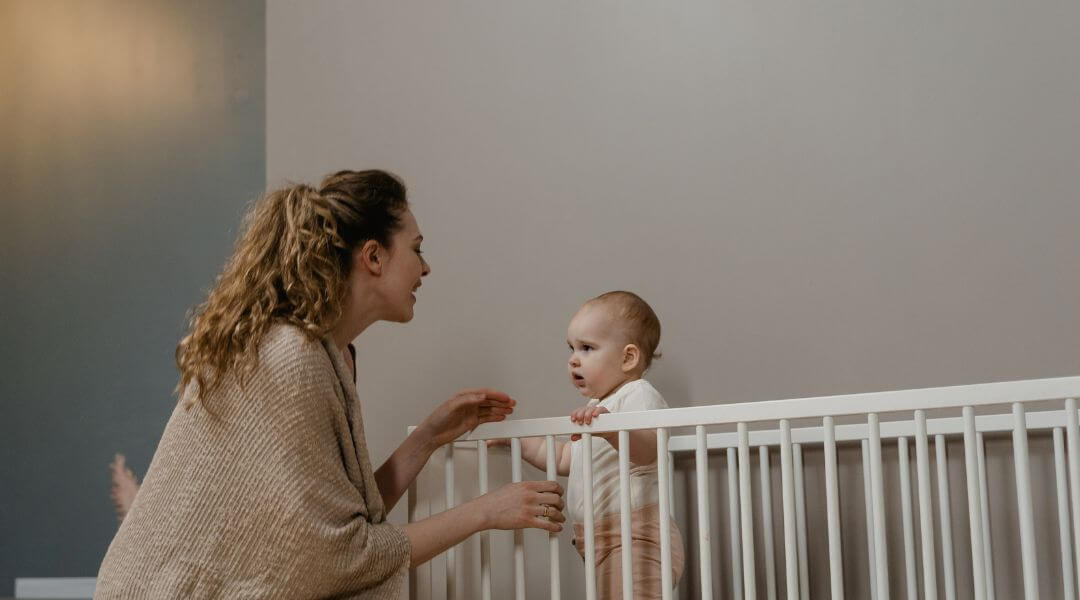When it comes to designing your baby nursery room, choosing the right crib is crucial. This decision will impact not just the aesthetics of the space, but also the long-term functionality and safety for your little one. Cribs come in different styles, with convertible cribs and traditional cribs being two of the most popular options. Each has its own set of benefits and can greatly influence how your baby nursery room serves you and your child.
What is a Convertible Crib?
Convertible cribs are designed with versatility in mind. They can evolve alongside your child, transforming from a crib to a toddler bed, and sometimes even to a full-size bed. This adaptable design adds significant value, making it a long-term investment for your baby nursery room.
The Benefits of Convertible Cribs
- Longevity: A convertible crib can be used for many years, adapting to your child's growing needs.
- Cost-Effective: Since you won't need to buy a new bed as your child grows, convertible cribs can save you money over time.
- Space Saving: Ideal for smaller baby nursery rooms, as you’ll need less furniture over time.
- Style Variety: Many convertible cribs come in various designs to match your nursery aesthetic.
However, while the initial purchase might seem more expensive than a traditional crib, the long-term benefits usually make it financially sensible. But is a convertible crib the best option for every parent? Let’s dig deeper.
What is a Traditional Crib?
Traditional cribs, on the other hand, are just that—cribs. They are designed for infants and typically come with fixed side rails and a classic design. These cribs may not transform into other types of beds, making them more of a short-term solution compared to convertible cribs.
The Benefits of Traditional Cribs
- Affordability: Traditional cribs generally come at a lower price point than convertible cribs.
- Sturdiness: Many parents appreciate the solid construction typical of traditional cribs.
- Design Simplicity: They come in various designs, allowing you to find one that matches your baby nursery room's style without needing additional features.
- Focused Safety: With fewer components to manipulate, traditional cribs may seem safer for infants.
While traditional cribs may offer benefits, they do have limitations. The decision to go traditional also means you'll need to eventually buy a new bed for your growing child, adding to your future expenses.
Key Considerations for Choosing a Crib
As you decide between a convertible crib and a traditional crib, consider the following factors to help guide your choice for your baby nursery room:
Budget
Your budget is one of the primary concerns when choosing a crib. Have a realistic evaluation of how much you're willing to spend. Remember to factor in the costs of additional furniture if you opt for a traditional crib in the long run.
Space and Layout
The layout of your baby nursery room is vital. If you have limited space, a convertible crib could be the ideal solution, as it reduces the need for multiple pieces of furniture. However, if you have ample space, you might prefer a traditional crib for its classic appeal.
Future Needs
Think about how long you plan to use the crib. If you envision adding more kids or using the nursery for a longer period, investing in a convertible crib may offer more value. If this is a one-time situation, a traditional crib may suffice.
Style Preferences
The aesthetic of your baby nursery room is essential too. How does the crib fit into the overall theme and design? Consider color schemes, materials, and styles to ensure that the crib harmonizes with the nursery’s approach to décor.
Safety Ratings and Standards

Regardless of the type of crib you choose, safety should always be a top priority. Both traditional and convertible cribs must meet strict safety standards. Look for cribs that comply with the latest regulations, and check for recalls on models you are considering.
Crib Safety Tips
- Ensure the crib meets all current safety standards set by the Consumer Product Safety Commission (CPSC).
- Avoid using drop-side cribs, as they pose safety hazards.
- Regularly check for loose screws and any visible wear and tear.
- Keep the crib away from windows, cords, and any other potential hazards.
Common Misconceptions
There are many myths surrounding cribs that can confuse prospective parents. Let's debunk some of them:
Myth 1: Convertible Cribs Are Too Complicated
Many parents worry that convertible cribs are too complicated to set up or convert. However, most models are designed for ease of transition, often requiring minimal effort to change configurations.
Myth 2: Traditional Cribs Are Always Safer
While traditional cribs can be very safe, convertible cribs that adhere to safety standards are just as safe, if not safer, for your child when used correctly.
Myth 3: Cribs Aren't Necessary After a Certain Age
Some parents believe they can transition their child straight to a toddler bed. However, safety experts recommend keeping children in cribs until they are ready and able to climb out or around age two.
When to Make the Transition
Deciding when to transition your child from a crib to a bed can be daunting. Here are some signals to look for:
Age
While there's no strict age to make the switch, most children transition between ages 2 to 3. Pay attention to your child's needs and readiness for a real bed.
Physical Development
If your child starts climbing out of their crib, it may be time to consider a bed for their safety. Every child develops differently, so trust your instincts.
Creating the Perfect Baby Nursery Room
Whichever crib you choose, the ultimate goal is to create a nurturing environment for your child. A well-designed baby nursery room can help foster development and provide comfort.
Décor Ideas for Your Baby Nursery Room
- Color Palette: Choose soft, soothing colors to promote relaxation.
- Lighting: Soft, adjustable lighting can create a calming atmosphere during late-night feedings and diaper changes.
- Furniture Placement: Keep the crib away from drafts and ensure there's ample room for moving around.
- Storage Solutions: Incorporate creative storage to keep baby essentials organized and accessible.
Investing time and thought into the design of your baby nursery room not only prepares a haven for your newborn but also sets the stage for cherished memories.
Final Thoughts to Ponder
Your choice between a convertible crib and a traditional crib ultimately depends on your personal needs and preferences. Both options can beautifully complement your baby nursery room. By evaluating budget, space, aesthetic, and safety, you can make an informed decision that ensures comfort and functionality for years to come. Remember, the right crib is not just a piece of furniture but a foundation for your child’s growth and security!









